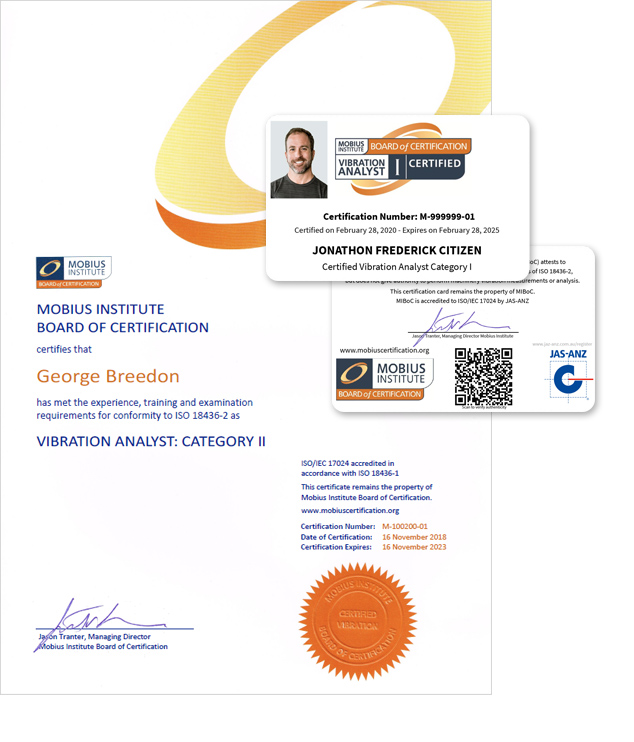VCAT-III Vibration Analyst
Learn to be an effective vibration leader and master analyst - capable of managing the condition monitoring program, diagnosing the widest range of fault conditions, verifying and correcting resonance problems, performing complex balancing machinery - with advanced 3D animations and interactive simulations that make everything easy to understand.
If you are ready to be a senior vibration analyst, with the capability of handling all the common fault conditions and leading the Category I and II analysts, then this is the course for you.
The Category-III course is intended for people who are confident with spectrum analysis but who wish to push on and learn more about signal processing, time waveform and phase analysis, cross-channel testing, machine dynamics, and fault correction. If you wish to truly advance in vibration analysis and be able to run a successful condition monitoring team, then you are ready for this course.
FREE DEMO: See a preview of the VCAT-III course. Included is segments from our instructional videos and a chapter from our comprehensive VCAT-III manual. You can access the training demo with your student credentials or create a new account using this link – VCAT-III Course Demonstration Link.
- You will learn to diagnose all of the common fault conditions with rolling element and sleeve bearing machines, utilizing spectra, high-frequency detection techniques, time waveforms, phase readings, and other techniques to diagnose faults.
- You will also learn machine dynamics (natural frequencies, resonance, etc.), how to perform resonance testing, and how to correct resonance problems. The course also covers the single and cross-channel measurement capabilities of your analyzer.
- And after completing the CAT-III course, you will be able to set up and run a successful vibration program and mentor the junior analysts.
Once you complete the training, you can take the exam with confidence, and become certified to ISO 18436-2 Category III via the internationally respected Mobius Institute Board of Certification [MIBoC]™. The MIBoC certification is accredited to ISO/IEC 17024 – there is no higher standard. You will join thousands of other Mobius™ certified analysts around the world.
DOWNLOAD BROCHURE HERE
Learn to be an effective vibration leader and master analyst
Learn More about VCAT-III Training and Certification
- Why learn with Mobius Institute™?
- How can I take this course?
- VCAT-III Candidate profile
- VCAT-III fast facts
- Which topics are covered?
- Do you offer a free demo?
- Why become certified by Mobius Institute Board of Certification?
- VCAT-III training and certification requirements
- A detailed list of training course topics
Frequently Asked Questions
Some of the more common questions regarding our VCAT-III Senior Analyst course
- CAN I SKIP THE CATEGORY II COURSE AND CERTIFICATION AND JUMP DIRECTLY TO CATEGORY III?
- WILL I RECEIVE PRE-COURSE STUDY MATERIALS?
- DO YOU OFFER EXTENDED LEARNING ACCESS?
- CAN I BUY THE LEARNING ZONE ACCOUNT AND USE IT TO STUDY FOR THE CERTIFICATION EXAM?
- DO YOU OFFER ON-SITE INSTRUCTOR LED COURSES?
- MAY I TAKE ONE OF YOUR COURSES IF I AM NOT INTERESTED IN BECOMING CERTIFIED OR IF I HAVE INSUFFICIENT EXPERIENCE FOR CERTIFICATION?
- AFTER I ATTEND YOUR COURSE AND TAKE THE EXAM, WHEN WILL I RECEIVE NOTIFICATIONS AS TO WHETHER I PASSED, AND WHEN WILL I RECEIVE MY CERTIFICATE?
- HOW LONG IS THE CERTIFICATION VALID?
- WHAT ARE THE EXPERIENCE REQUIREMENTS FOR VCAT III?
- HOW DO I QUALIFY FOR RENEWAL?
- HOW DO I RENEW MY CERTIFICATION?

